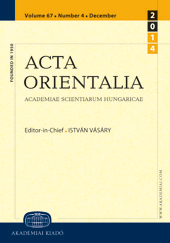Struggle for the chapel of Belgrade (1612–1643). Trade and Catholic church in Ottoman Hungary
Struggle for the chapel of Belgrade (1612–1643). Trade and Catholic church in Ottoman Hungary
Author(s): Antal MolnárSubject(s): Economic history, Theology and Religion, 17th Century, The Ottoman Empire
Published by: Akadémiai Kiadó
Keywords: Ragusan and Bosnian trade in the Ottoman Balkans; Catholic missions in Ottoman Hungary; interdependence of ecclesiastical and commercial history; Papacy;
Summary/Abstract: The feud over the Catholic chapel of Belgrade took place between representatives of the Franciscan and the Jesuit religious orders living in Ottoman Hungary and the other occupied parts as well as the Bosnian and Ragusan traders. The parties even involved the local authorities and those of Istanbul, the Ragusan Republic, and above all the supreme authorities of the Catholic Church in Rome as well. The conflict erupted in 1612 when, with the backing of the Ragusan traders, the first Jesuit missionaries appeared in the town and the Bosnian Franciscans, afraid of losing their position and revenues, tried to oust them. The Jesuits, however, taking advantage of their Roman and Ragusan connections, withstood the Franciscan pressure. With the help of the Ragusans, they bought a house in the çarşı in Belgrade and secured a permit of settlement from the Ottoman authorities. The conflict lasted for over three decades, from the 1620s the real conflict was not between the Franciscans and Jesuits for the chapel but who controlled trade and markets in the occupied areas. The widening series of conflicts could not be terminated by the expulsion of the Jesuits from Belgrade in 1632. The row only abated by the beginning of the 1640s. By formulating a generalised model of the relationship between the merchants and the Church, we can conclude that the most important social medium and major factor of shaping denominations in Ottoman Hungary and the Balkans were the merchants. Due to the absence of the Christian ruling classes in regions occupied by the Ottomans, the wealthy merchants became the élite of the conquered population.
Journal: Acta Orientalia Academiae Scientiarum Hungaricae
- Issue Year: 60/2007
- Issue No: 1
- Page Range: 73-134
- Page Count: 62
- Language: English
- Content File-PDF

